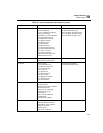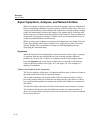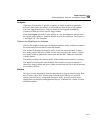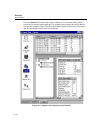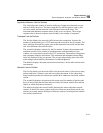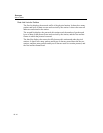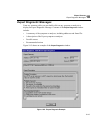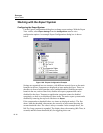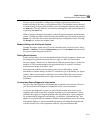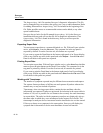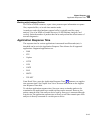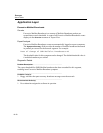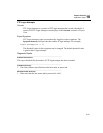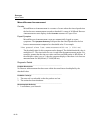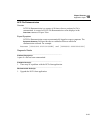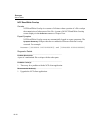
10-17
Expert Features
Working with the Expert System
10
The tree can be expanded or collapsed by clicking on the plus or minus icon,
double-clicking on the item, or using direction keys. The checkbox can be checked
or unchecked by clicking on the checkbox or by selecting the symptom and pressing
the
Space bar. The edit control is activated by selecting the value and clicking on it
or pressing the
Space bar.
When a setting is changed, the number is checked against minimum and maximum
values. Clicking anywhere inside the dialog box besides the edit control or pressing
Return key closes the edit control and enters the new configuration value. Pressing
the
Escape key restores the original value.
Module Settings for the Expert System
Turning the expert system on or off can be controlled on a per-device basis. Select
Module → Settings... from the Configuration menu. From the Modes tab, turn on/off
the expert system using the check box.
Setting Expert Alarms
Expert Alarms allows you to set thresholds related to Expert Symptoms. Alarms can
be configured to perform an action such as a page or e-mail, as with all other
Surveyor alarms. Alarms test for thresholds at different protocol layers, such as the
number of NFS retransmissions at the application layer or a specific overload
utilization percentage at the MAC layer.
Some network problems are not single events, but are indicated by certain
thresholds or counters being exceeded. To catch these type of problems, use Expert
Alarms. Many event counters within the Expert Alarm Table that can be used to
flag network conditions that are not single events, such as excessive multicast
broadcasts.
Customizing Expert Diagnostic Information
Surveyor provides diagnostic information that is general to all networks. However,
you can customize the diagnostic information to suit your environment.
As you use any diagnostic system you may find that certain error events occur
regularly and or that events have a unique meaning in your environment. Custom
solutions may apply to fixing the problems that are indicated by expert symptoms.
By customizing the diagnostic information, you build an “information base” that
applies to your particular environment. When the same problems occur, the custom
information displays as well as standard information, providing the diagnostician
with the benefit of previous experience related to your particular network.



